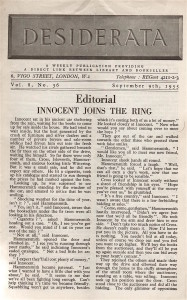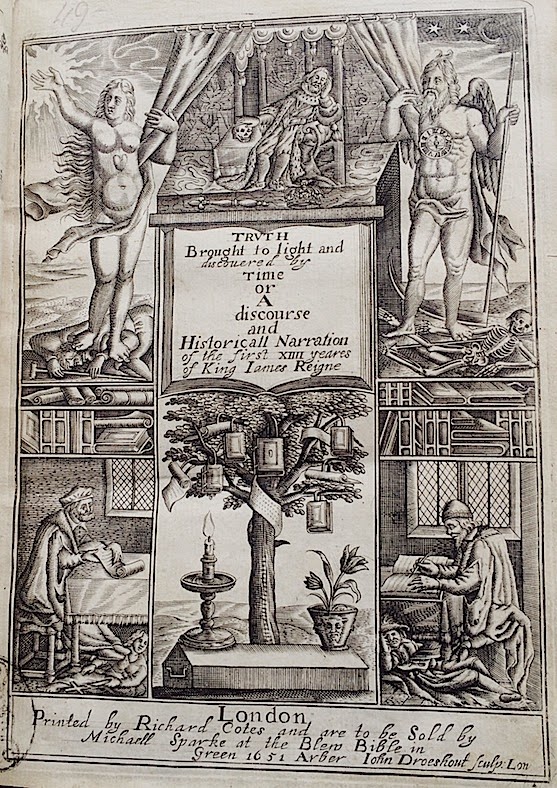 How come nothing can be found online about the little weekly periodical entitled Desiderata, a copy of which was found in a box of books the other day? It resembles the Clique in some respects, but unlike the latter, whose main job was to put collectors and booksellers in touch with one another, it aimed instead to provide ‘ a direct link between library and bookseller ‘.
How come nothing can be found online about the little weekly periodical entitled Desiderata, a copy of which was found in a box of books the other day? It resembles the Clique in some respects, but unlike the latter, whose main job was to put collectors and booksellers in touch with one another, it aimed instead to provide ‘ a direct link between library and bookseller ‘.
The copy we found is probably fairly typical. It is issue number 36 of volume 8 and is dated September 9th 1955. Its 12 pages comprise an editorial in the form of a salutary story about a bookseller’s ring; there follows a rather silly defence of the inept ‘poet‘, Alfred Austin, against the entirely justifiable description of him by Evelyn Waugh as a ‘obnoxious nonentity ‘. Five whole pages of Wanted adverts from the British Museum then follow, and the rest of the issue is taken up by what appear to more Wanted ads from various public libraries, some small ads from booksellers and a full page ad from the eminent Guildford booksellers Traylen. A miscellany of literary notes and announcements takes up the back page.
The British Museum books wanted advert is the most interesting feature of the magazine. Listed in this case from ‘Tovey’ to ‘Trial’, the items demonstrate how keen the Library was (and presumably still is) to hold all editions of a particularly title, however seemingly obscure. This is, after all, its raison d’etre. However, one example listed seems out of place. There was a call put out for the 1915 second edition and its 1930 reprint of Pitman’s Dictionary of Secretarial Law and practice edited by Philip Tovey. Why would a 1930 reprint differ in any meaningful way from the 1915 second edition? Insisting on reprints for the sake of completeness is per se rather ludicrous. Continue reading







